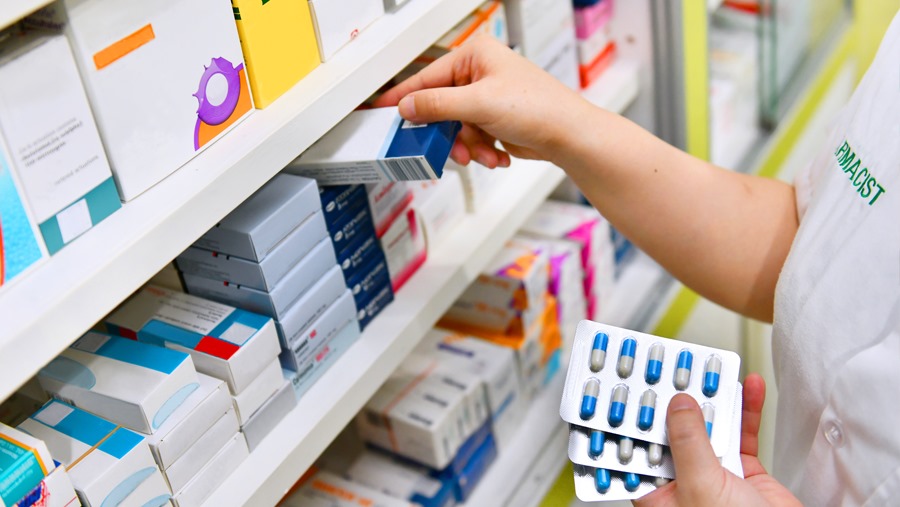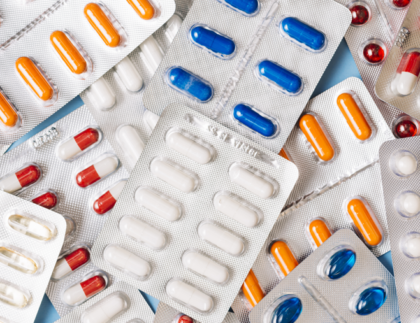
Pharmaceutical packaging plays a critical role in ensuring medical products' safety, efficacy, and stability. It serves as a protective barrier against external factors, such as moisture, light, air, and contaminants, that can potentially degrade the quality of pharmaceuticals. This comprehensive guide will delve into various types of pharmaceutical packaging solutions, each designed to address specific needs and challenges in the industry.
CSRF Lidding Solutions
Child-Resistant Senior-Friendly (CSRF) lidding solutions are a type of packaging designed to prevent accidental ingestion of pharmaceutical products, particularly by children. These lidding solutions often incorporate a combination of push-and-turn closures or other mechanisms that require a level of dexterity and cognitive ability that children typically lack. This ensures that the contents of the package remain inaccessible to them.
CSRF lidding solutions are crucial for drugs that can pose serious risks if ingested improperly. They strike a balance between providing accessibility to adults and deterring children from opening the packaging. This type of packaging is often used for medications that fall under the category of controlled substances or those with potential toxicity.
Blister Lidding Foil
Blister packaging is a widely used method for individual unit-dose packaging of pharmaceutical products. Blister lidding foils serve as the top layer of blister packs, providing a barrier to protect the medication from moisture, oxygen, light, and other external factors that could degrade its quality.
These foils are typically made from materials like aluminum or other barrier films. They are designed to be easily heat-sealed to the blister base, creating a tamper-evident seal that keeps the product secure until the end user opens it.
Cold Form Blister
Cold-form blister packaging is particularly useful for protecting medications that are sensitive to heat or require enhanced barrier properties. In this type of packaging, the blister is formed at room temperature using a combination of plastic and aluminum layers. This results in a more robust and effective barrier against external factors.
Cold-form blisters are commonly used for pharmaceutical products that require extended shelf life and enhanced protection against environmental influences.
Pouching Applications
Pouch packaging is a versatile option for pharmaceutical products that need to be packaged in larger quantities, such as multi-dose medications, powders, or liquids. Pouches can be customized with various materials, sizes, and closure mechanisms to suit the specific requirements of the medication.
Pouches can be designed with resealable closures, making them convenient for medications that need to be accessed multiple times while maintaining their integrity. They are also suitable for unit-dose applications and can incorporate features such as desiccants to control moisture levels within the pouch.
Strip Foil
Strip foil packaging is commonly used for packaging unit-dose medications, especially tablets or capsules. This packaging format consists of individual pockets or compartments sealed with aluminum foil. Each pocket contains a single dose of the medication, making it convenient for patients to carry and use.
Strip foil packaging offers protection against moisture, light, and contamination, ensuring that each dose remains intact until consumption. It also aids in patient compliance by clearly indicating the sequence of doses to be taken.
Suppository Laminates
Suppository packaging requires specialized laminates that can withstand the challenges posed by the unique nature of suppositories. These laminates are designed to provide a barrier against moisture and temperature variations, while also allowing for easy insertion of the suppository.
Suppository laminates are crucial for maintaining the efficacy and stability of the medication. They often include materials like polyvinyl chloride (PVC) or aluminum to ensure the desired properties.
Extrusion Laminates
Extrusion laminates are used in pharmaceutical packaging to combine the advantages of different materials. These laminates are created by bonding multiple layers through extrusion, resulting in a composite material that offers enhanced protection, barrier properties, and functionality.
Extrusion laminates can incorporate materials like aluminum, plastic films, and paper to create packaging solutions that cater to specific pharmaceutical requirements. They are utilized for various packaging formats, including sachets, pouches, and blister packs.
Tropical Laminates
Tropical laminates are engineered to withstand the unique challenges posed by tropical climates, which are characterized by high temperatures and humidity levels. These laminates provide a robust barrier against moisture and environmental factors that could compromise the quality of pharmaceutical products.
Tropical laminates are often used for medications distributed in regions with hot and humid climates. They play a critical role in maintaining the stability and shelf life of pharmaceutical products in such conditions.
Adhesive Laminates
Adhesive laminates are used in packaging formats that require a strong bond between layers. These laminates are created by applying adhesive to bond materials like plastic films, aluminum, and paper. They are used in applications such as sachets, pouches, and labels.
Adhesive laminates ensure that the layers remain securely bonded, preventing delamination and maintaining the protective barrier. They are also used to incorporate additional features like labels or inserts onto the packaging.
Conclusion
Pharmaceutical packaging comes in various forms, each tailored to address specific challenges and requirements of the industry. From ensuring child-resistant closures to protecting against moisture and temperature variations, these packaging solutions play a crucial role in maintaining pharmaceutical products' safety, efficacy, and quality. As the industry continues to evolve, innovative packaging technologies will continue to emerge, further enhancing the protection and convenience of medications for patients worldwide.
Are you a pharmaceutical company seeking diverse packaging solutions that cater to your unique product requirements? Look no further than PackTime, a leading Pharmaceutical Packaging Company in the USA. We understand that different medications demand tailored packaging to ensure their safety, efficacy, and shelf life.
Our expert team is committed to providing innovative solutions that meet the evolving demands of the pharmaceutical industry. With a focus on quality, compliance, and customer satisfaction, PackTime is your trusted partner for all your pharmaceutical packaging needs.



